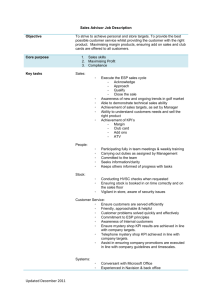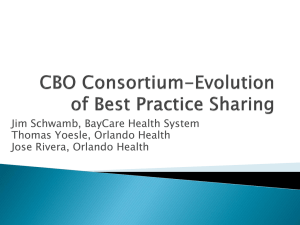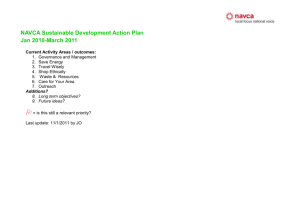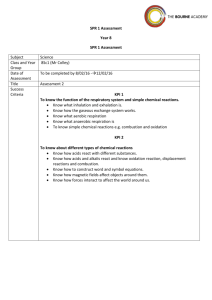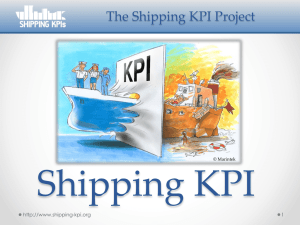1 - HSE
advertisement
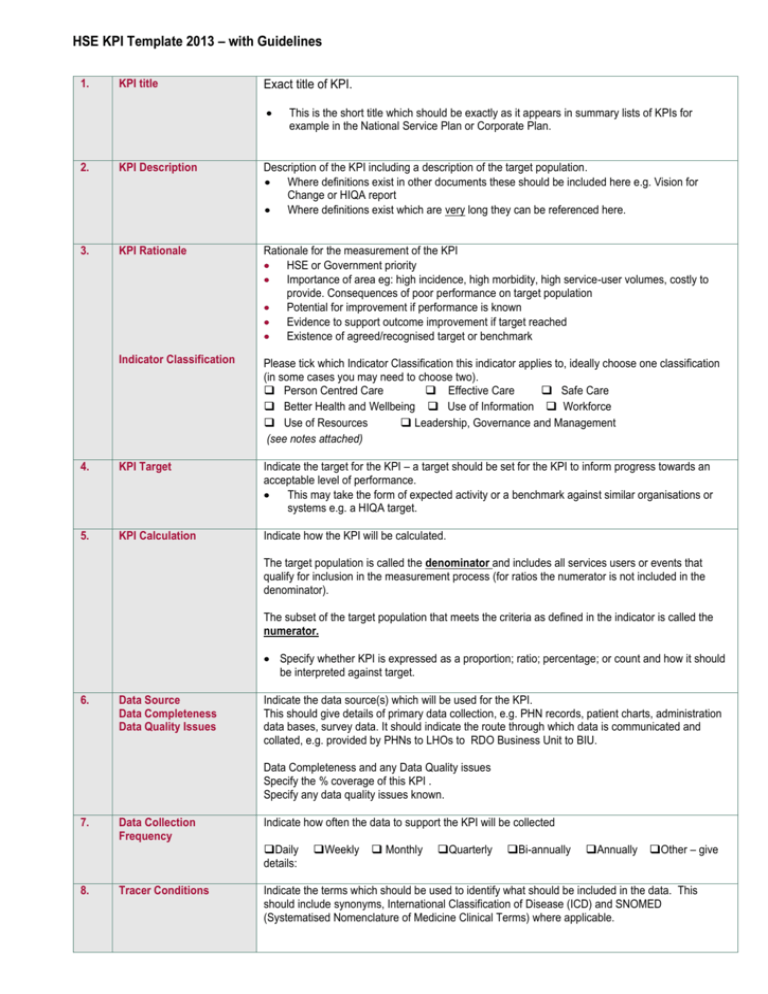
HSE KPI Template 2013 – with Guidelines 1. KPI title Exact title of KPI. This is the short title which should be exactly as it appears in summary lists of KPIs for example in the National Service Plan or Corporate Plan. 2. KPI Description Description of the KPI including a description of the target population. Where definitions exist in other documents these should be included here e.g. Vision for Change or HIQA report Where definitions exist which are very long they can be referenced here. 3. KPI Rationale Rationale for the measurement of the KPI HSE or Government priority Importance of area eg: high incidence, high morbidity, high service-user volumes, costly to provide. Consequences of poor performance on target population Potential for improvement if performance is known Evidence to support outcome improvement if target reached Existence of agreed/recognised target or benchmark Indicator Classification Please tick which Indicator Classification this indicator applies to, ideally choose one classification (in some cases you may need to choose two). Person Centred Care Effective Care Safe Care Better Health and Wellbeing Use of Information Workforce Use of Resources Leadership, Governance and Management (see notes attached) 4. KPI Target Indicate the target for the KPI – a target should be set for the KPI to inform progress towards an acceptable level of performance. This may take the form of expected activity or a benchmark against similar organisations or systems e.g. a HIQA target. 5. KPI Calculation Indicate how the KPI will be calculated. The target population is called the denominator and includes all services users or events that qualify for inclusion in the measurement process (for ratios the numerator is not included in the denominator). The subset of the target population that meets the criteria as defined in the indicator is called the numerator. Specify whether KPI is expressed as a proportion; ratio; percentage; or count and how it should be interpreted against target. 6. Data Source Data Completeness Data Quality Issues Indicate the data source(s) which will be used for the KPI. This should give details of primary data collection, e.g. PHN records, patient charts, administration data bases, survey data. It should indicate the route through which data is communicated and collated, e.g. provided by PHNs to LHOs to RDO Business Unit to BIU. Data Completeness and any Data Quality issues Specify the % coverage of this KPI . Specify any data quality issues known. 7. Data Collection Frequency Indicate how often the data to support the KPI will be collected Daily details: 8. Tracer Conditions Weekly Monthly Quarterly Bi-annually Annually Other – give Indicate the terms which should be used to identify what should be included in the data. This should include synonyms, International Classification of Disease (ICD) and SNOMED (Systematised Nomenclature of Medicine Clinical Terms) where applicable. 9. Minimum Data Set Indicate what core data items (with definitions) should be collected for the purpose of reporting the KPI. 10. International Comparison 11. KPI Monitoring The data lines can be included here or an example appended for information where there is a definitive minimum data set available. Indicate if this KPI is collected in other jurisdictions outside of Ireland and therefore allows for international comparison. Indicate how often the KPI will be monitored and by whom KPI will be monitored on a (please indicate below) basis: Daily Weekly Monthly Quarterly Bi-annually details: Annually Other – give Please indicate who is responsible for monitoring this KPI: 12. 13. KPI Reporting Frequency KPI report period Indicate how often the KPI will be reported (at a National level this will align with the agreed reporting timeframe in the NSP). Daily Weekly Monthly Quarterly details: Indicate the period to which the data applies Bi-annually Annually Other – give Current (e.g. daily data reported on that same day of activity, monthly data reported within the same month of activity) Monthly in arrears (June data reported in July) Quarterly in arrears (quarter 1 data reported in quarter 2) Rolling 12 months (previous 12 month period) Other – give details: _________________________ 14. KPI Reporting Aggregation Indicate the level of aggregation – this refers to the combination of results to provide a broader picture of performance for example over a geographical location. National Regional LHO Area Hospital County Institution Other – give details: 15. KPI is reported in which reports? Indicate where the KPI will be reported for example: Corporate Plan Report Performance Report (NSP/CBP) CompStat Other – give details: 15. Web link to data Indicate the web link to the data (where this is available) 16. Additional Information Include any additional information relevant to the KPI Contact details for Data Manager/ Specialist Lead National Lead and Directorate Name: Email address: Telephone Number Name: Directorate: Email address: Telephone Number: Proposed Quality and Patient Safe Care Indicator Classification Person Centred Care Effective Care Safe Care Better Health and Wellbeing Use of Information Workforce Use of Resources Leadership, Governance and Management Has service users at the centre of all that it does, it advocates for the needs and rights of service users, respects their values and preferences and actively involves them in the provision of their care. Care that delivers the best achievable outcomes through the evaluation and use of available evidence. It prevents or minimises unnecessary or potential harm, it minimises the risk associated with delivering care; it prevents adverse events, minimises their impact when they occur and learns when things go wrong. The service promotes, protects and improves the health and wellbeing of the population served and constantly looks for ways and opportunities to do this. Quality information is an important resource for service providers in planning, managing, delivering and monitoring high quality safe service. Quality information is accurate, valid, reliable, timely, relevant, legible and complete. A services workforce is a significant asset in delivering quality, safe care, must be planned, configured and managed and members of this workforce need to be skilled and competent in delivering this care. Safe high quality care is intrinsically linked to how resources are used including how they are planned, managed and delivered, and includes human, physical, financial and natural resources. A well governed service has robust governance arrangements that ensure the service is clear about what it does, how it plans and delivers services with clear lines of accountability at individual team and service level.


